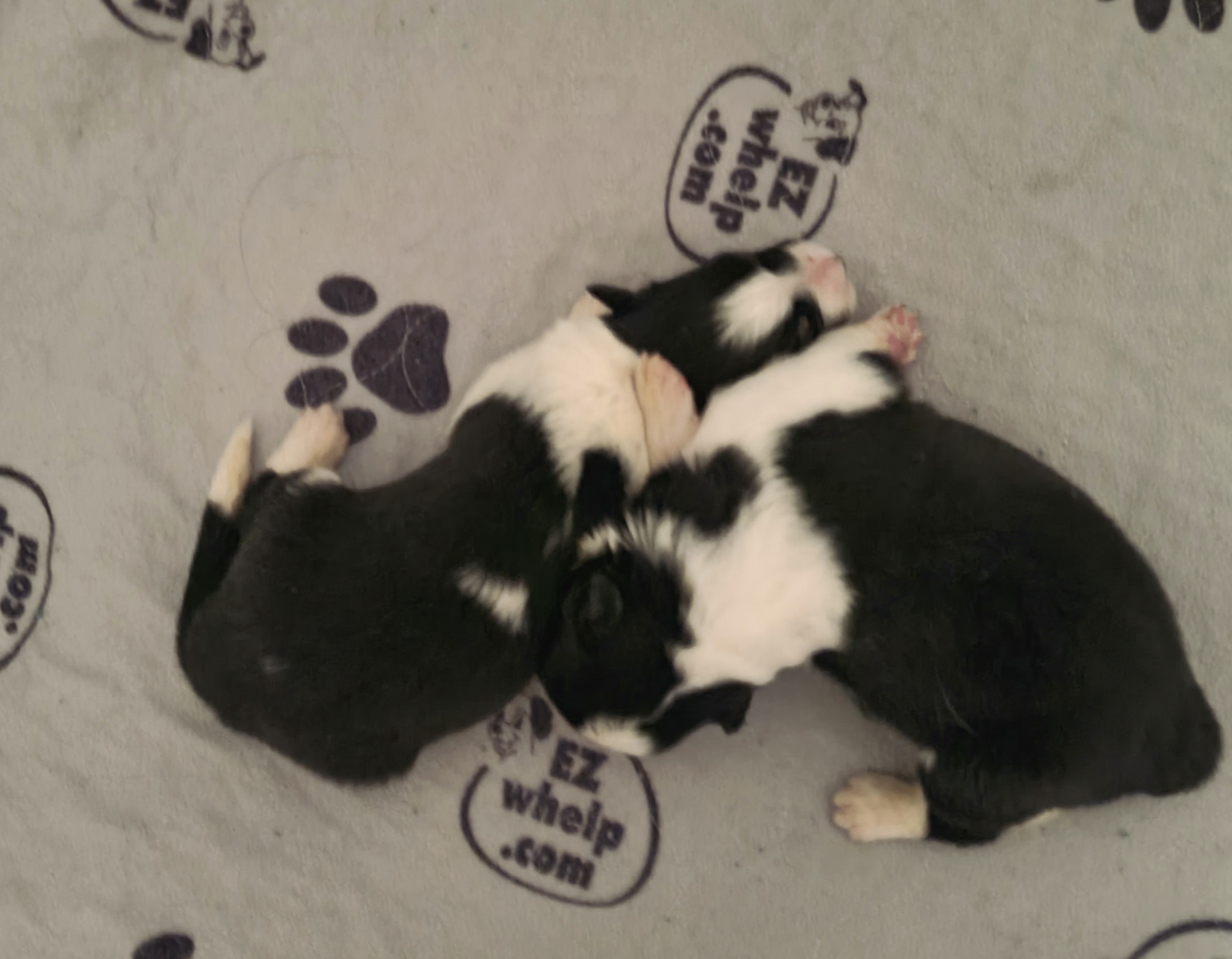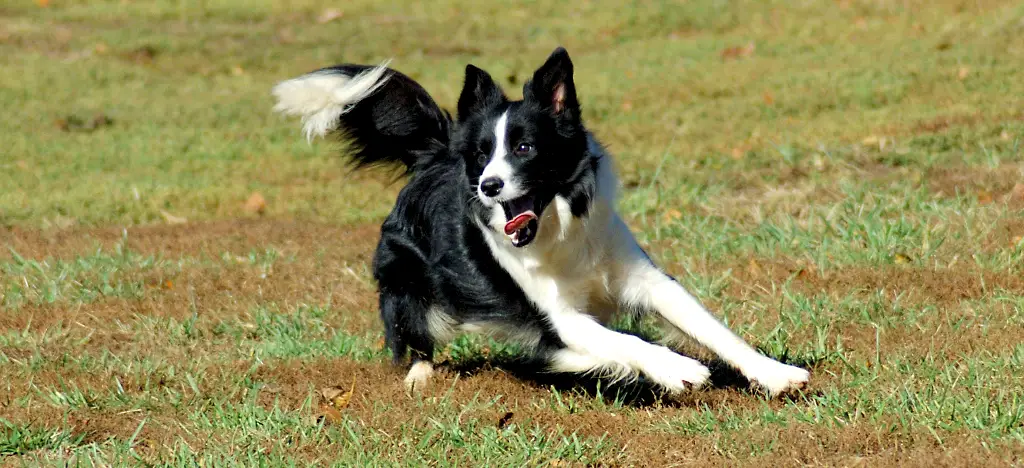Most experienced mothers easily handle the delivery and revival of their newborn puppies. However, new mothers and mothers of large litters may need help resuscitating their puppies as the delivery progresses. Additionally, puppies that spend a long time in the birth canal during delivery, may arrive with fluid in their lungs and require more heroic efforts to get them breathing normally. Here are breeders’ dos and don’ts of how to revive a newborn puppy at home.
How To Revive a Newborn Puppy Delivered with the Sack Intact
If a puppy is born with the sack intact, and the umbilical cord is attached to the placenta and all three are present, the mother typically begins by eating the placenta. She will follow from the placenta up to the umbilical cord. Then chew up to the puppy’s abdomen, to gnaw the cord off near the abdomen. While the umbilical cord and placenta are still attached to the puppy, the puppy continues to receive oxygen and nutrients via the cord for several minutes.
This is a seemingly violent process, where the puppy is tossed about, while she twists and turns her head, to gnaw through the resistant umbilical cord. While it can be hard to watch, it shows you how resilient newborn puppies are. It also shows you what mothers do, to help get their puppies breathing.
Reviving a Newborn Puppy in the Sack
Allow the mother to work on the placenta, while you focus on tearing open the sack at the puppy’s head. (Leave the puppy on the floor of the whelping box while you do this). The sack is stretchy, but tears easily then easily slides down to the puppy’s shoulders.
Support the puppy’s head and open the puppy’s mouth with the supporting hand’s thumb and index finger, by pressing gently at the corner’s of his mouth. Using your other index finger (your nails should be trimmed down close) clear any mucus from the back of the throat. Just a quick swipe which may also induce a gag reflex. Use a dry wash cloth to remove any fluids from the nose and head.
For most puppies, this is enough to make them gasp and start breathing on their own. The puppy may vocalize and begin squirming in your hands. These are all very good signs. Slip your index finger in the puppy’s mouth now. You will get a good idea of his sucking reflex, and how strong it is.
How Short Should The Umbilical Cord Be Cut
If the mother is still working on the placenta or umbilical cord, I like to try to cut the cord myself at 3/4″ from the abdomen. If she gnaws it off to close the the puppy’s belly, it can start a geyser of spurting blood. When that happens, don’t panic, just hold a dry wash cloth the the belly for 30-60 seconds, and the bleeding should stop. If it is still bleeding, apply pressure for two more minutes.
It is not necessary to tie off the umbilical cord. If it was, no puppy would have survived delivery in the wild or unattended.
Now rub the puppy vigorously to start drying him, and if he is breathing normally and vocalizing irritation at your rubbing, you can give him to his mother for more cleaning and stimulation. If the puppy’s lungs sound gurgling when breathing, he/she needs more work from you. We address that below.
How to Revive A Newborn Puppy Delivered Out of the Sack
Puppies delivered out of the sack, still and not breathing require immediate attention. Note that there is a difference between a still puppy with good muscle tone and a limp puppy, whose neck lolls when lifted. We will discuss limp pups with no muscle tone in the next section.
Begin by clearing the airways as above with a cloth and your finger, and begin rubbing the puppy. Hold the pup with the feet dangling down. With one hand, hold him at a slight angle with the head at a 20 degree angle below the hips. With the other hand, rub the puppy’s ribs briskly. If the umbilical cord is still attached, leave it be for the time being. It is possibly still supplying oxygen.
If the pup does not gasp, hold the pup’s nose to your mouth and open the mouth with a squeeze at the corners of his mouth between the fore finger and thumb. Puff some air in to expand his lungs, one or two puffs. Then rub for 15 seconds more, then puff again. You can also tap on the back at the ribs, to try to loosen the mucus.
Don’t Sling the Puppy!
Many online resources recommend slinging the puppy in an arc to try to loosen the congestion. If that will loosen congestion, imagine what it is doing to the puppy’s brain. It is called shaken baby syndrome in humans, and it can kill the puppy.
Using Acupuncture to Stimulate a Puppy to Breath (GV26)
This is a method of Traditional Chinese Medicine that has been studied in a variety of mammals, including humans. It helps stimulate breathing in animals experiencing hemorrhagic shock, anesthesia overdose and it works to get newborns to take their first breath. The acupoint known as Governing Vessel number 26 (GV26 (Renzhong/ Jenchung)) is located in the midline of the philtrum (the little crease in midline of nose) of dogs and cats, and is level with the lower edge of the nostrils.

How Stimulation of GV26 Works
Stimulation of GV26 works to increase heart rate, cardiac output and produces blood pressure changes similar to a shot of epinephrine. Think of it as a reset button for mammals experiencing a cardiac or apnea event. It is also helpful in reviving puppies who have too much anesthesia following a C-section, and whose breathing is being suppressed by the anesthetic.
You can use an acupuncture needle (AP needle) or a small gauge hypodermic needle (26 gauge or smaller) or if you don’t have a needle on hand, you can try using your finger nail. The needle is inserted at GV26 and twirled vigorously, while while moving in and out (but don’t pull it out of the flesh – just pulsing it slightly). Effects of stimulation of GV26 may take effect as soon as 10 seconds, or may require 10 minutes of stimulation. Once the puppy gasps and begins breathing regularly, you can stop stimulation. A little blood at removal of the needle shows the heart is pumping now.
Don’t Quit Trying to Revive the Puppy Too Soon!
Getting a puppy breathing can take up to 20 minutes. Some breeders say they have revived a puppy after 30 minutes. So stay at it! At various times, you may give the puppy to the mother to let her flip him around with her aggressive licks. You can take turns working on the puppy. Once you get the puppy breathing, you can access if there is fluid in the lungs or a weak suckling reflex.
Sometimes they cannot be revived, or you need to deal with the next puppy born. In that instance, let the mother take some time with her puppy.
Reviving a Limp Newborn Puppy
I have heard from breeders that they have been able to revive puppies with no muscle tone, who were cyanotic (having a blue tongue and muzzle, that will pink up with oxygen). Applying the previously discussed rubbing may be able to get them going. However, sometimes the puppy has passed due to early separation of the placenta and a long wait for delivery (perhaps it was held up by a larger puppy in the birth canal). A completely limp puppy, whose head hangs perpendicular to the body, is likely a lost cause. You can give it a go, but move on to higher priorities as they present themselves.
Clearing Fluid From The Lungs of a Newborn Puppy
Puppies who have spent a long time in the birth canal, and those who are delivered toward the tail end of the whelping may have fluid in their lungs. You can easily hear a rattle when they exhale. It is important to help them expel these fluids, or they can develop pneumonia. Small pups with pneumonia will not survive without veterinary intervention. The vet can give them oxygen in an incubator, subcutaneous fluids and antibiotics.
At home to help expel fluids, use the above method of rubbing with the head pointed down at a 20 degree angle with the back up and the ribs held in your hand. You can also tap on the back firmly, but not hard with two fingers. This is a form of chest percussion as is the rubbing. After each tap, allow the pup to exhale. Every 30 seconds, you can place the pup’s muzzle up to your mouth an puff a little air in to help expand his lungs. Puff gently, considering their lung volume is the equivalent of a squeaky toy insert.
The Infant Bulb Syringe
You can use an infant bulb syringe to help encourage fluids from the throat and lungs. You want to only to squeeze it very lightly; certainly don’t use its full force. Insert the tip of the syringe into the puppy’s mouth. Time the initial squeeze when it inhales, then release the pressure on the bulb as he exhales (when you hear the rattle beginning). Remove the syringe and expel any contents from it, you don’t want to spray those contents back into the lungs. This can be done 2-3 times. Then return to rubbing and tapping the sides of the ribs and back.
How to Help Newborns With Poor Suckling Reflexes
Pups with poor suckling reflexes are likely hypoglycemic. Signs of Hypoglycemia are lethargy, weakness and possibly trembling. This means they have expended their store of energy in the birthing process, and they need a bit sugar to give them strength. Sugars, specifically glucose, do not require digestion to be absorbed. You can place it on the gums or under the tongue, and it will be absorbed directly into the bloodstream. Apply one drop of Caro syrup or maple syrup to the gums or under the tongue.

How to Revive a Newborn Puppy Who Is very Still
Once you have resuscitated the puppy, observe the pup. If in a minute or two it is more active, place it next to one of the mother’s teats, and see if it starts nosing around to find it and latch on. However, if the puppy is very still watch for activated sleep. This means that every 15-20 second the puppy twitches a foot, its head or the whole body shudders. This is a good sign; healthy puppies should twitch. Puppies who do not twitch are in trouble.
If the puppy is not twitching, make sure the pup is warm, place him under a heat lamp to stay warm, but not hot. You hand should be comfortable under the heat lamp. Mix a 5% glucose solution for him with 1 teaspoon of Caro syrup and 4 teaspoons of boiling water. Make sure the solution is warm but not hot, and use an eye dropper to place one drop on the tongue. Be sure the pup swallows it before placing another drop on the tongue. You can give him 5 drops to try to rehydrate him and give him strength without having to use his digestive tract to absorb the glucose.
This sugar bump gives the puppy strength to nurse. The first mother’s milk, colostrum, is essential to puppy survival. It is filled with antibodies that will give him the ability to withstand stray contaminants in the environment. We want the puppy strong enough to nurse and get some of this good colostrum. With litters of 4 pups or more, the competition can become fierce very early on. Weak puppies will be pushed aside easily.
How to Revive a Newborn Puppy: The UK Versus US Ideas on Puppy Uppers
USA Puppy Invigoration
In the US, we tend to prefer sugars, to give puppies a quick energy boost. This can come from Caro syrup, one drop applied under the tongue, or Stat. Stat is a glucose serum with several other ingredients to designed to rescue puppies. Glucose is absorbed directly into the bloodstream without requiring the digestive system. Nursing and digestion require energy, in the form of glucose, to be effective. You should see the puppy getting more active and seeking mom, within 10 minutes after administration.
You can add more if you are not seeing results in 15 minutes. Again a drop – 1/2 the size of a pencil eraser, under the tongue or on the gums.
UK Puppy Invigoration
In the UK, breeders often prefer beef liver water to strengthen puppies. Boil beef liver in water, and let it cool to warm (101 degrees). Use an eye dropper to place a drop under the tongue. This adds fluids for dehydrated pups as well as iron. Wait 5 minutes to apply another drop. Up tp 4-5 drops can be applied in this manner to give the pup some energy. This method is particularly effective if hookworms are suspected. Pale gums, tongue and paw pads indicate anemia and likely hookworms.
I am an over doer, so I do both in 5-10 minute increments, until I see them gaining strength. Leftover liver water can be chilled in the fridge, and given to any weak pups, after warming, or to the mother, the next day.
Final Thoughts
Dog breeding is not for the faint of heart. Stuck puppies cause panic in our girls, as well as their owners. Puppies who arrive in trouble cause another panic; it is terrible to lose a pup. And sometimes puppies arrive with birth defects. Staying calm and level headed is best achieved by knowing the possible complications, and what you can do to overcome them, before begins whelping.
Be sure you know where the closest emergency vet is, as whelping often comes in the middle of the night. Discuss possible scenarios with your vet, and how they suggest you best handle them. Some vets are willing to come in to their practice in the middle of the night, but that is getting rarer these days.




